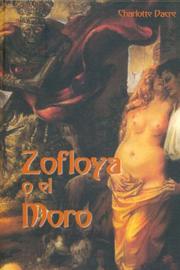Baillie’s dramas, in particular Plays on the Passions stand
at the crossroads of the Scottish Enlightenment and early Romanticism. One can
see the effect these had on her writing, and may explain her focus on the human
mind and its relationship to human nature. However, her beginnings were with
poetry, for which she was regarded as one of the finest woman poets in her
lifetime. Elizabeth Barrett Browning even hailed her as “the first female poet
in all senses in England.” Her career in poetry sits in contrast with that of
her dramas, for it’s poetry itself which she goes on to criticize in Plays on
the Passions, for they don’t often include human nature in them, creating a
disconnect between the reader and the poem.
Baillie came from an intellectual family with important links
to the major philosophical and scientific communities of the time, in
particular the “common sense” school of philosophy that became known as the
Scottish Enlightenment. Her uncle was William Hunter, anatomist and physician,
who founded the University of Glasgow’s Hunterian Museum, and Matthew, her brother, born in 1761, later
became a medic and anatomist. Baillie, intelligent and with a stimulating
intellectual background, however, was excluded from the scientific world, which
was why she launched her own examination of the psyche.
Edinburgh during the Scottish Enlightenment
Her Plays on the Passions, was produced in
three volumes between 1798 and 1812. The first volume created quite a stir
amongst the literary circles of London and Edinburgh when introduced
anonymously. The speculation into the authorship concluded two years later when
Baillie came forward as the writer of the collection, thereby causing a
subsequent sensation since no one had considered her as a candidate in the
mystery. The three plays which were included were "Count Basil: A
Tragedy," "The Tryal: A
Comedy," which show love from opposing perspectives; and "De Monfort:
A Tragedy," which explores the drama of hate. It’s within Dramas that Baillie believes lies
the most captivating characteristic writing may contain: human nature. Drama is
the purest genre which isn’t caught up in eloquent or flowery rhetoric,
stripping itself from these methodical attributes and bringing it as close to
reality as possible.
So far, we haven’t read any works which would fit completely under
Baillie’s description, for none of them have been Dramatic plays. Nonetheless,
Baillie does recognize that novels may obtain a certain level of real human emotion
which readers can identify themselves with. Baillie states the urge human
beings have of “looking into another man’s closet,” meaning they want to discover
their deepest secrets and motivations for acting the way they do. In Zofloya,
for example, we observe a much more deep evolution within the characters,
especially in Victoria as well as Zofloya, than in A Sicilian Romance, in which
although there are major plot events occurring, the characters show little depth.
Julia’s perfect nature is exactly what Baillie addresses as a lack of human
nature, for it doesn’t depict a realistic human being. However, she also suggests
that just as a perfect depiction of a character is bad, a purely evil on is
too. In Zofloya we can observe this other side of the spectrum, for Zofloya is
depicted as the devil in person. None of these sides contain what Baillie would
see as essential, which is tha of human nature.
Discussion
Questions
1.
Do you agree with Baillie that novels create a disconnect between the reader
and the work itself with the use of rhetoric devices or even the sublime?
2.
Is human nature, as Baillie describes it, in your opinion essential?
3.
What flaws do you think Baillie would see in the novels we’ve read so far?















